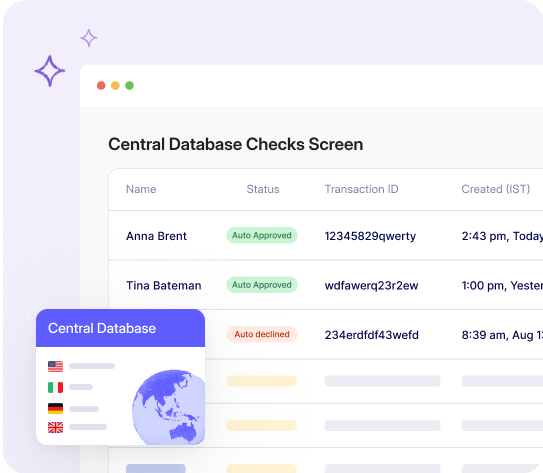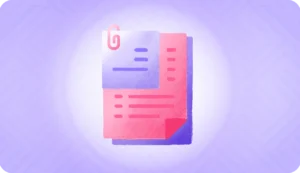Verifying a driver’s license number is a crucial step to ensure you’re not handing over the keys to a potentially fraudulent or unqualified driver. Similarly, many other businesses require a valid driver’s license for their own safety and security.
This guide provides insights on how you can confidently validate a driver’s license.
Understanding driver’s license verification
Driver’s license verification refers to the process of confirming the authenticity and validity of a driver’s license. As a universally recognized form of identification, driver’s licenses carry substantial weight in verifying one’s identity. These documents not only affirm an individual’s legal authority to operate a vehicle but also provide crucial identity details such as name, age, and address.
With increasing incidences of identity theft and fraud, the importance of driver’s license verification cannot be overstated. It serves as a critical safeguard in numerous sectors including car rental, insurance, and law enforcement, ensuring the identity of a person interacting with these services is legitimate.
Applications of driver’s license data verification
Driver’s license verification is a valuable tool in various industries, including:
- Insurance Companies: Insurance providers rely on driver’s license verification to determine risk signals and set premium rates accordingly. For example, drivers with a history of traffic violations and accidents usually have higher insurance rates.
- Law Enforcement: Police officers use license verification to identify individuals during routine stops or when investigating an incident involving a vehicle. In addition, it helps in tracking down suspects and solving crimes.
- Employers: Employers can use driving license verification as part of their background checks for job applicants, especially for positions that require motor vehicle driving. Even for non-driving jobs, it can serve as an additional form of identification.
- Customer Onboarding: For businesses, particularly in the financial sector, verifying a customer’s driver’s license is essential during the onboarding process. This helps confirm the customer’s identity and comply with Know Your Customer (KYC) regulations.
- Transportation: In the transportation industry, especially for vehicle rental or rideshare services, driver’s license verification forms a vital part of ensuring that only authorized and competent individuals are entrusted with vehicles.
Overview of mobile driver’s license verification
Mobile driver’s license verification is the modern approach to verifying a driver’s license. It involves using a mobile application or software to capture, store, and verify the data on a physical driver’s license. With this technology, businesses can easily access and authenticate an individual’s driving credentials from their smartphone or tablet.
Benefits of Mobile Driver’s License Verification
- Convenience: Mobile driver’s license verification eliminates the need to physically check or scan a physical driver’s license. This saves time and effort, especially for high-volume verifications.
- Accuracy: The use of advanced technology in mobile driver’s license verification ensures that the data captured is accurate, reducing errors compared to manual data entry.
- Security: With biometric authentication features such as facial recognition, mobile driver’s license verification adds an extra layer of security to prevent identity theft or fraud.
How does driver’s license verification work?
The specifics of how mobile driver license verification works may vary depending on the technology used. However, here are the general steps involved in the process:
Data Capture: The first step is capturing an image or scan of the physical driver’s license using a mobile device. Ensure that the image is clear and legible as poor image quality can affect the accuracy of verification.
Data Extraction: Next, the data from the image or scan is extracted using optical character recognition (OCR) technology. This includes information such as name, driver’s license number, date of birth, and other relevant details.
Database Verification: The extracted data is then compared to the information stored in a secure database, such as the Department of Motor Vehicles (DMV) records or other government databases. This ensures that the information on the physical driver’s license is valid and up-to-date.
Biometric Verification: Some mobile driver’s license verification systems also include biometric authentication, such as facial recognition or fingerprint scan, to verify the identity of the individual presenting the driver’s license.
Verification Result: The final step is receiving a verification result, which can indicate if the driver’s license is valid, expired, or has any discrepancies compared to the official records.

Manual verification of driver’s license
Manual or physical driver’s license verification can often prove to be less reliable due to the susceptibility to human error. Assessors might overlook minor inaccuracies in the information or fail to detect sophisticated forgeries. Furthermore, it’s a time-consuming process that requires substantial human resources. Manual checks also lack the ability to cross-verify data with official databases in real-time, allowing invalid licenses or licenses past their expiration date to go unnoticed.
Online driver’s license verification
The rise of technology and increased connectivity has resulted in the development of online driver’s license verification systems. These systems allow for a quick, efficient, and accurate way to verify a driver’s license without relying solely on manual checks.
Running AAMVA Checks
One of the most common verification systems used is the American Association of Motor Vehicle Administrators (AAMVA) check. This system allows for real-time verification of driver’s licenses by comparing the information presented on the license of the person with data from official AAMVA databases. This includes details such as name, date of birth, and driver’s license number.

Adding Selfie Identification Checks
Some online verification systems also incorporate selfie checks. A selfie check involves the user taking a live photo or video of themselves holding their driver’s license next to their face. Advanced facial recognition technology is then used for face scan and match the individual in the photo with the one on the license, ensuring that the license belongs to the person presenting it.
Read more about selfie identity verification here.
Driver’s license verification using an API
A Driver’s License Verification API is a software intermediary that enables applications to communicate with various databases to verify virtual driver’s license information. This API conducts real-time checks by sending the license data inputted in the application to connected databases.
It cross-references this data with official records to confirm its authenticity and mark fake driver’s licenses. APIs like these are especially important in industries such as car rental, insurance, and any other sectors that require secure, quick, and accurate driver’s license verification.
Know more: HyperVerge’s online DL verification API
Is driver’s license verification enough to verify a person’s identity?
While driver’s license verification is a critical component of identity verification, it shouldn’t be the sole method used. The reasons for this are manifold – licenses can be lost, stolen, or forged. Therefore, a comprehensive identity verification solution, which may include passport or national ID checks, biometrics, and two-factor authentication, offers a more robust, multi-layered approach. This ensures greater security, minimizes fraud, and improves customer trust and confidence.
When it comes to identity verification, HyperVerge’s end-to-end solution stands out as a robust, trustworthy choice. This comprehensive system offers high-level security and fraud minimization. Key features include document verification, which cross-references official identity documents like digital driver’s licenses, social security number, and passports. In addition, phone verification and comprehensive database checks contribute to heightened fraud prevention. These elements work in tandem to provide a secure, reliable verification process.
Ready to elevate your business’s identity verification process? Get started with HyperVerge’s end-to-end solution today.
FAQs
1. How to check driver’s license status?
To check a driver’s license status, you can contact the Department of Motor Vehicles (DMV) in your state. You can also use online verification services provided by certain states’ DMVs or third-party companies. These services typically require entering the driver’s license number and personal information to verify the status.
2. What are the documents needed for the online driver’s license verification process?
The documents required for the online driver’s license verification process may vary depending on the state or service provider. However, some common documents that are typically accepted include driver’s license number, full name, date of birth, and Social Security Number. Some states may also require additional forms of identification such as a passport or national ID.





















